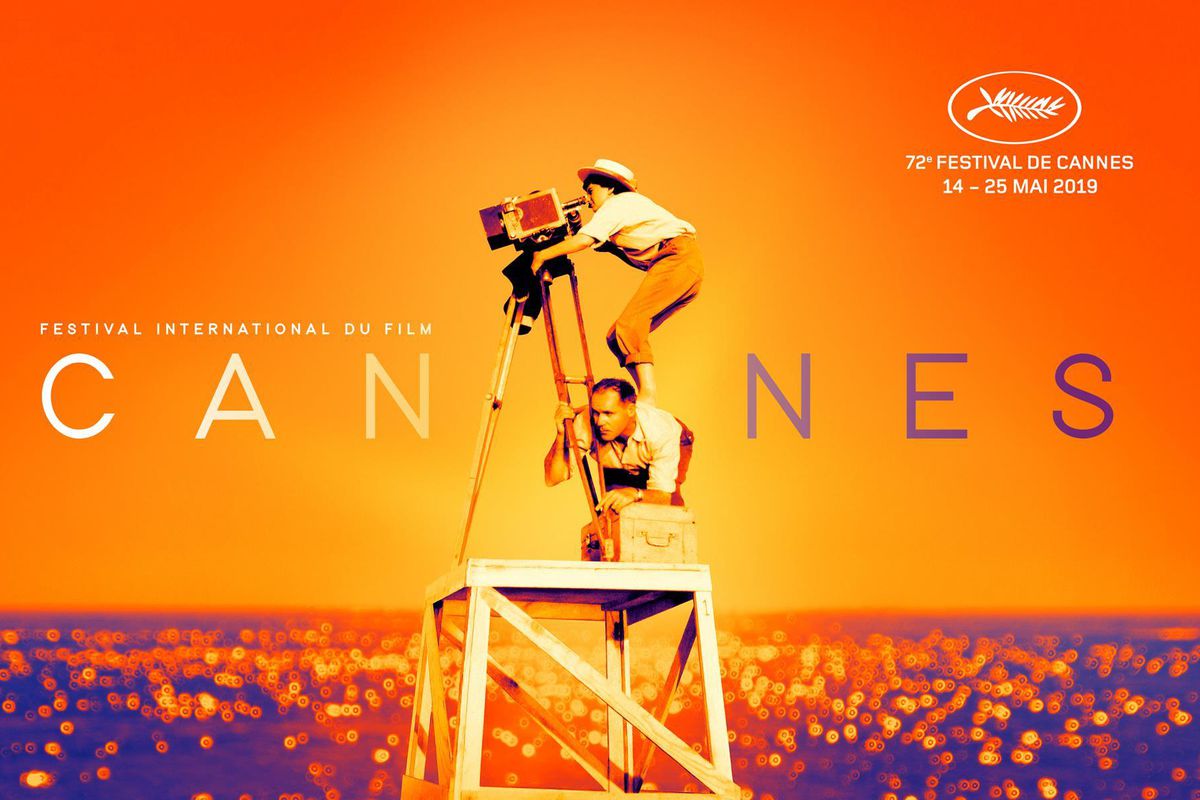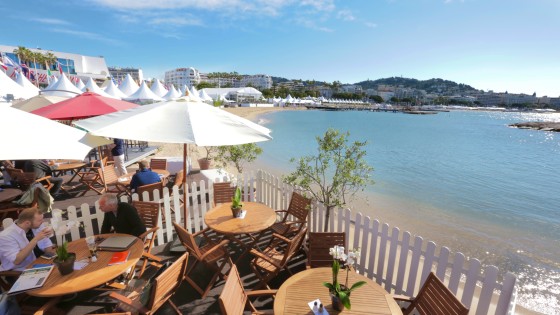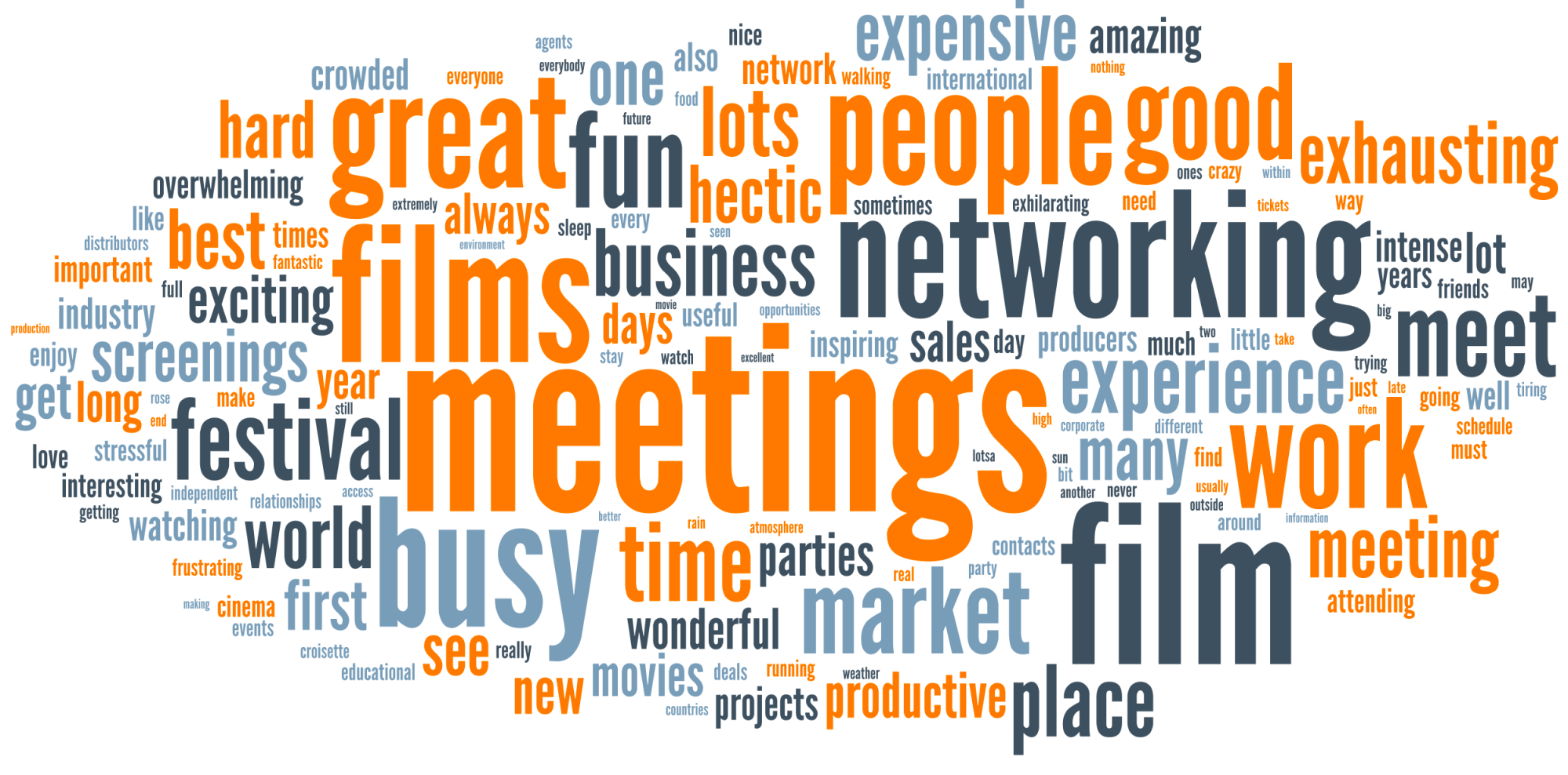– an overview of “my” festival
– a few points on the festival business side
– two big takeaways: “time scarcity”, and our growing fake worlds
26 May 2016 (Cannes, France) – The title of this piece comes from a long chat I had with a film financier friend. As he said “wow: the sad, new, distorted reality – fake videos, fake people, fake news. I thought they were amateurs. They’re pros!” More at the end of this post.
“My” Cannes Film Festival
If my schedule permits, I make two trips to Cannes each year: the film festival in May, and then in June for Cannes Lions – the latter being “The Cannes Lions International Festival of Creativity” which is a global event for those working in the advertising, creative communications, digital media and related fields.
I attend the Film Festival because I got lucky. A long-time client is Akamai Technologies and a few years ago they flipped me an access badge. Akamai is a leading cloud platform for enterprises. They provide secure, high-performing user experiences on any device, pretty much anywhere. They provide online video coverage of the film festival to all mobile-connected attendees and also to official Cannes International Film Festival website visitors. And they provide trailers and related on-demand content to iPhone, iPad, Android, Blackberry, etc. devices across the Akamai “Intelligent Platform” HD Network.
I have a large digital media industry following (it is my largest subscriber base) and over the last few years I have spent a lot of time focusing on content delivery to mobile and tablet devices, and writing about it for that subscriber base. My “go to” travel device is an iPad Pro (12.9 inch display, 1TB storage, flip keyboard) which the Akamai wizards configured with special apps to max my writing/editing ability for both text and video. Just a brilliant travel device.
But I like Akamai not only because it is a fun client to work with but because it allows festival directors .. and even beginning filmmakers through cool workshops … define their digital strategy WITHOUT having to master every element of digital distribution technology. That technology is forbidding stuff. And Akamai’s relationship with Cannes stretches back many years so there is a very helpful “arc of technology” … from the year 2000 … on how Internet media content and distribution developed.
Today, it is very cool to see how a cloud-based technology platform for live and on-demand video streaming scales to such a high on-demand level to support the largest online events by managing millions of simultaneous streams. And it is rich, high-definition quality mobile video. To any device at broadcast-size audiences. Amazing stuff. And for my e-discovery readers who I have added to this distribution, it is why I am ROTFL whenever an EDD vendor’s software crashes because it cannot support a ramp up of document reviewers, or handle multiple simultaneous uses, and crashes. EDD software is hardly a rich, high-definition, high-quality content environment so it really should be seamless.
This year I only had time to make it down for the last two days. I head back home tonight. And I am not here for the glamour really (and I could not get the premier tickets even if I wanted them). I am here for the digital film technology workshops, and just to see equipment I can only dream about using:
But I do get to attend many of the events (some of which are free because over the years the organizers have opened many events to the public) which I can access via my green badge (for film and sound crews).
And, yes, in case the maze of French etiquette wasn’t enough to stoke your insecurities, the shade of your accreditation lanyard tells you exactly what the festival thinks of your importance: it’s a caste system. At the bottom – Cannes’ underclass – are the Yellows. Just above them are the Blues, the most numerous and the festival’s working class. Then comes Pink, the middle class, or petite bourgeoisie. Right above, the upper middle class, is Pink with a yellow dot. And at the top, Cannes’ 1 percent, are Les Blancs — holders of the coveted white badges.
There also are gray and orange badges for photographers, green for film and sound crews, and the business market’s black badges for industry attendees. But while they all give specific access — to photocalls, say, or market screenings — they carry no significance in terms of social ranking. A market badge is a market badge is a market badge, but for the critics vetting the films and the reporters covering the proceedings, the shade of your badge determines your festival experience. It grants — or denies — access to in-demand screenings, photocalls and news conferences. That in turn translates into access to talent. If you can’t get in to watch a high-demand film, fat chance lining up the interview afterward with the stars.
But I got in to hear some cool stuff, like the Q&A with Sylvester Stallone who said he wants to make a new Rocky film but one in which the boxer encounters an immigrant living illegally in the US. He would not be in it … and he suggested the film would likely not be made, but “it could work. Rocky finds this fella who’s in the country illegally and it becomes a whole thing. It would be really phenomenal, really different.”
A few notes on the business side of the Festival
The Cannes Film Festival and (more importantly) the film market are the highlights of the world-wide film calendar each year, with an epic number of events, screenings, parties and meetings crammed into this little French town over the course of eleven days. A major reason professionals attend the Cannes market is to sell distribution rights for their films. Yes, yes. There are all kinds of film premieres and parties. But $$$$ is the driver here. These distribution rights are bought by a small number of the attendees (2,800+ in 2018) who have the official “Buyer” classification, usually illustrated via a purple stripe on their market pass.
Perspective: 32,626 people were officially accredited as attendees to the festival and market in 2018; in addition there were 4,589 accredited press members.
Their meeting point is the Marché du Film, known as the world’s largest movie marketplace.
As time in Cannes is short, producers and sales agents do all they can to reach buyers. And the data suggests … oh, there are gigabytes of data analyzing this event … that one thing they can do is ensure that they’re attending right from the opening of the market (at 9am on Tuesday 14th May this year) when the ratio of buyers to attendees is at its most favorable.
Cannes is expensive for everyone, but most of all for those selling. It is possible for cash-strapped European filmmakers to attend Cannes fairly cheaply. And scores of film and media students attend. There are low-cost fights, taxi pooling, tons of Airbnb listings (many stay one or two towns over from Cannes) and eating from supermarket delis. Which can make the entire trip cost under €700.
However, those who have movies to sell have far fewer options to save money (without losing face). Having an official base from which to preview your movies and negotiate deals start in the tens of thousands of Euros and can quickly move up to hundreds of thousands. As well as the costs of paying your staff, flying them to Cannes and housing/feeding them, here are some data points:
– The smallest booth in the least desirable part of the market (9m2 in the Palais -1) starts at €4,650.
– You’ll then need to advertise your movies, which can range from just a few thousand Euros up to €30,000 for a poster outside the Palais, the main building.
– Some sales agents choose to take over a normal hotel room in one of the major hotels, stripping out the beds and turning it into an impromptu office.
– A night in The Grand hotel will set you back €1,110 during the festival (the same room a week earlier is half the price). Likewise, staying in a standard room at The Majestic during the festival costs €915 per night, whereas in the week before the festival it’s just €205 per night.
– It’s not just those selling movies who pay big bucks to be seen in Cannes. Along the beach are a row of pavilions, promoting different countries and regions of the world as “film capitals”, much like they do at their massive pavilions at the Mobile World Congress where they sell themselves as “mobile tech capitals”.
The official list price for a small pavilion (25m2 inside and the same again for a beach-front terrace) is €17,025. But that’s just the ten-day rent; after that, you’ll need to furnish, staff and supply the tent. Between 2012 and 2018, according to a friend in the British film industry, the British Pavilion cost an average of £490,000 each year to run.
And a few “fun facts”. Among the Cannes contradictions are:
– Many movies on sale have not been made, and never will be. Many of those “promos” are for films that do not exist but are looking for $$$$.
– Deals struck in Cannes are often not actually “struck” in Cannes. There is a lot of “pre-Cannes-bashing-out-dealing” via phone calls, email, Skype, Dropbox, Vimeo, etc. This means that in the weeks leading up to Cannes a number of deals will be completed but the announcement will be held back until the market opens. This gives the Cannes press something to write about on Day One and also ensures that the filmmakers making the deals get the maximum exposure for their new agreements – a common modus operandi at almost every trade show.
– It looks like everyone is having so much fun but many film professionals hate going to Cannes. Filmmakers have fun, but distributors don’t.
– It’s all about meeting people, but last-minute meetings are impossible unless you are “a name”. Yep. Network, network, network … but set up your meetings in advance. Me? I had no meetings. I am a “green badge” guy. Who’d want to talk to me … other than other green badge folks.
– During the day, everyone dresses in a super casual, almost-scruffy manner. But then they are required to dress to the nines if they want to watch a movie. Well, the premium movies. Many of the “low status” films are slightly outside the venue for the public and the dress code less restrictive.
Cleo Nesbirtt of BrandWatch did her annual Cannes survey (interviewing 2,010 Cannes veterans) which is to ask them to describe what Cannes means to them. The word cloud below shows the words they used, with the most frequently used words appearing the largest:
My two big takeaways this year
This year I managed to catch two other brilliant sessions. Well, one was an official session and the other was a rather impromptu chat fest.
The session was on “time scarcity”, the fact that nobody can add a 25th hour to the day. It’s about “attention life” that any content producer needs to measure by – advertisers, bloggers, video creators, etc. Any piece of content out there is competing against the entire wealth of human knowledge which we now have, more or less, accessible to us at any given moment.
I once maintained four distinct websites, each focused on the four areas I cover: cyber security, digital media, legal technology, and science. Through much of what I have learned at Cannes (and the International Journalism Festival) over the years I reduced everything to two sites, and sharpened up my headlines and my visuals. That has greatly reduced my bounce rate (the percentage of visitors who enter the site and then leave … “bounce” … rather than continuing on to view other pages within the same site) and has increased my engagement rate (the number of interactions, clicks, and followers) to an an average 8%. Good social media metrics. It’s made me a happy camper.
The other “session” was more of an impromptu chat. Jack Mabry of a company called Computer Graphics Interactive had a session on “deepfakes” – the technique for human image synthesis based on artificial intelligence used to combine and superimpose existing images and videos onto source images or videos. I actually wrote a long piece on this last year. It’s a machine learning technique called a “generative adversarial network”. The phrase “deepfake” was first coined in December 2017.
As Mabry explained it, academic research related to deepfakes had lied predominantly within the field of computer vision, a subfield of computer science often grounded in artificial intelligence that focuses on computer processing of digital images and videos. The landmark project was the Video Rewrite program, published in 1997, which modified existing video footage of a person speaking to depict that person mouthing the words contained in a different audio track. It was the first system to fully automate this kind of facial reanimation, and it did so using machine learning techniques to make connections between the sounds produced by a video’s subject and the shape of their face. But you had to understand the tech.
Today – it has exploded. The primary reason is due to a 2018 desktop application called FakeApp (there are now scores of other programs) that allowed any user to easily create and share videos with faces swapped. The app uses an artificial neural network and the power of the graphics processor but you do not need any technical background to use. It’s “off-the-shelf” software, and progressed just like the “off-the-shelf” software blamed for so many cyber attacks.
So today … welcome to our sad, new, distorted reality, the explosion of fake videos, fake people, fake news. After the session we began to catalog recent news and articles:
– This week, we reached a peak fake, with Facebook saying it had deleted 2.2 billion fake accounts in three months, a fake video of Speaker Pelosi going viral that Facebook refused to remove, and Trump going on a fresh “hyper fake news” tear.
– A Pew survey found that two-thirds of Tweeted links to popular websites came from non-human users (bots or other automated accounts)
– The New York Times found that fake experts, fake fundraisers and even fake think tanks are proliferating.
– The Verge found that “fake influence” has become the result of an internet that’s filled with fake measurement and personas.
Why it matters: This is just a small taste of our unfiltered future. It’s only going to get easier to generate fake audio, fake videos and even fake people — and to spread them instantly and virally. And in a long piece by Axios this week, they found that more than half of internet traffic comes from bots, not people. The piece noted:
– Dozens of content farms and internet hacks make money selling or amplifying fake video views or follower accounts to politicians and influencers.
– Distorted images can make any crowd size or event look bigger or smaller than reality, and can be adjusted to add more “youthful people” if necessary, or more “ethnics”.
– Around the world, fake polls are being set up to distort elections.
– The hottest political tactic this cycle is forcing a candidate or politician to defend themselves against a hoax (just two recent examples: U.S. presidential candidate Pete Buttigieg was falsely accused of sexual assault by right-wing trolls; U.S. presential candidate/U.S. Senator Kamala Harris has found herself caught up in a storm of fake memes questioning her identity and race.
Yes. Fakes and personas have existed on TV, radio and print for years. But legislators and regulators have simply failed to stay on top of social media platforms, with their billions of hard-to-track users from all over the world. And quite frankly regulation is futile (part 2 of my series on why social media can never be regulated will publish next week).
And the inevitable result of a fake information universe is going to be a REAL crisis manufactured by fake news, such as the misinformation about vaccines has led to an alarming number of measles outbreaks. And fake online pharmacies that have led to a spike in deaths.
There is so much more to write but I must bid adieu to Cannes … and make a dash to the airport.







